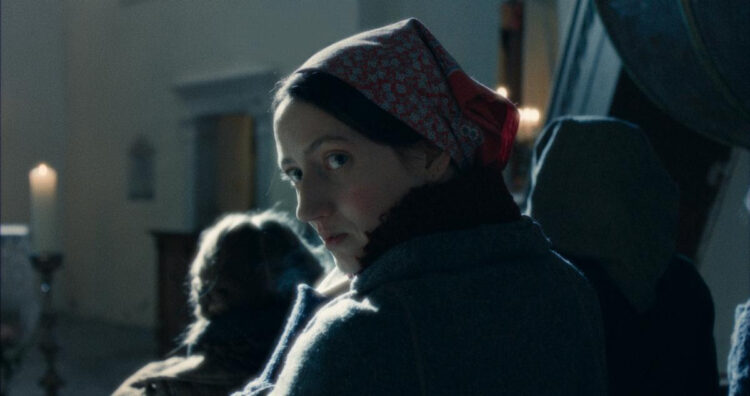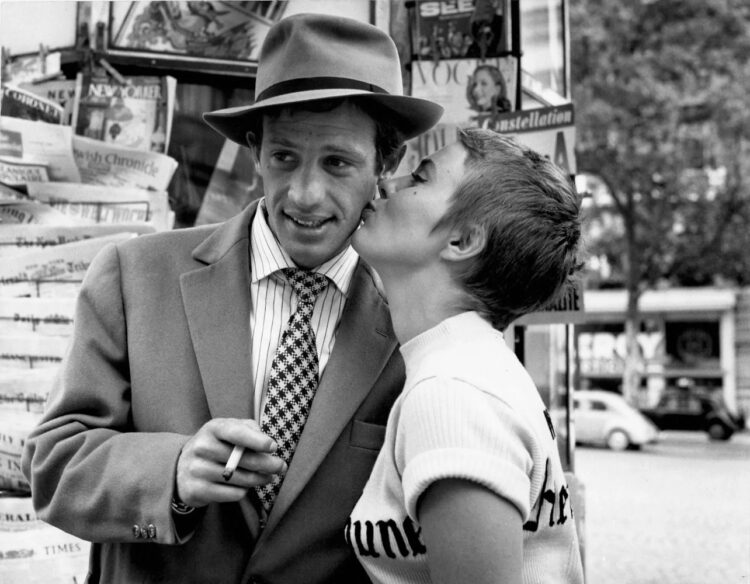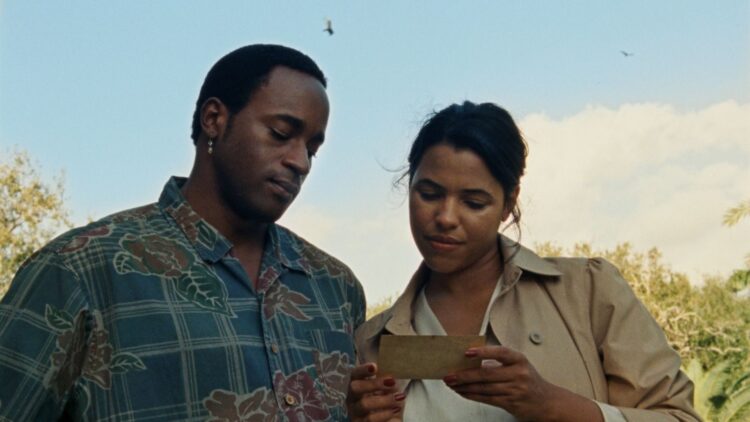

Vermiglio is set in the eponymous alpine village during the waning days of WWII. Maura Delpero’s film, gorgeously shot by Leviathan cinematographer Mikhail Krichman, is a slow-moving fable that unfolds as a novelistic series of pastoral tableaus. The short chapters evoke Balzacian poetic realism and recall the sensual textures of last year’s The Taste of Things. But unlike that film, which exuded autumnal warmth and celebrated pleasure––therefore freedom––Vermiglio‘s stark, wintery beauty comes at the price of its characters’ desires. The painterly frames physically constrain subjects, especially women who suffer pointedly under the social restrictions of this time and place.
Its story meanders through the village but centers on a family of nine, especially the patriarch Cesare (Tommaso Ragno) and his daughters Lucia (Martina Scrinzi), Ada (Rachele Potrich), and Flavia (Anna Thaler). The central plot follows the courtship of Pietro (Giuseppe De Domenico), a traumatized army deserter, and Lucia. On the night they share their first kiss, Lucia is veiled in white and paraded on a donkey for the town’s celebration of her namesake, the martyr Santa Lucia. According to legend, Santa Lucia tore out her eyes for a man who admired them, and God rewarded her act by restoring her sight. Lucia––and, to an extent, the other women in her family––will learn the painful sacrifices required for social and spiritual acceptance. (Incidentally, Santa Lucia is my namesake too––I still have a medallion necklace featuring a platter with two eyeballs from my First Communion.)
Lucia and Pietro’s saga is just one of the many narratives richly developed herein. Over the course of Vermiglio we see Ada, the overlooked middle child, battle her unholy adolescent desires with self-punishment while developing a provocative friendship with a neighbor. Flavia, the youngest, comes of age as she witnesses her sisters’ struggles.
Delpero masterfully captures the characters’ experiences and psychology through gesture, performance, and framing rather than dialogue. Krichman’s cinematography, perhaps the best of the year, invokes painting and theater. The camera rarely moves and each frame carefully blocks characters in relation to their environment, whether by contrasting a woman dutifully washing clothes while a snow-peaked mountain looms behind her or in frequent scenes of the central family’s six children crammed into three beds. The domestic space is often lit and shot to resemble a stage. Light is diffuse, seeping in like dry ice through windows. The hallucinatory views of the snow-capped mountains recall the painted backdrops of Black Narcissus, while interiors evoke the cool-blue fabrics and pink cheeks of a Mary Cassatt painting. Images often seem seen through a veil, heightening Vermiglio‘s fable-like quality.
But the film’s initial lightness and peace gradually give way to a bleakness, a sense of entrapment, that seeps beneath the skin. Catholic representations onscreen have often recognized the religion’s dedication to aesthetic beauty. While Vermiglio indulges in plenty of such, it also takes a clear-eyed look at the social structures it serves to camouflage.
This note of sadness intensifies with the war’s end, the film’s hazy winter transitioning to sharper, green-toned spring. As if awaking from a dream, characters suddenly experience the harsh reality of their circumstances: Ada’s aspirations are destroyed, Flavia sheds her innocence, and Lucia faces the cruelest reckoning. Watching this shift, one of the rare moments when one feels Vermiglio speeding up uncontrollably (most of the film’s pace could be described as deliberate and life-like), it’s hard not to think of how people are forced to adjust their modes of living in the face of changing global crises.
The coping mechanisms that helped them survive the war––Pietro reaching for Lucia after his traumatic experiences, their rushed marriage, their quick leap into parenthood––become sources of doom. Terms change, rules shift, and all are punished for their yearning.
Vermiglio screened at AFI Fest and will open on December 25.
The post AFI Review: Vermiglio Paints a Lyrical Portrait of Desires Constrained by Catholicism first appeared on The Film Stage.



